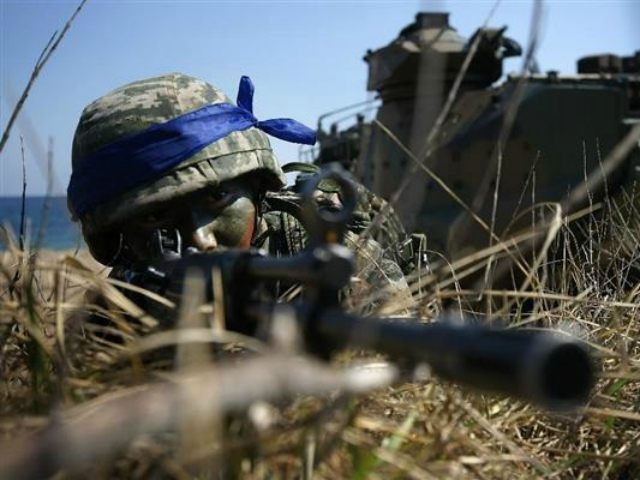North Korea carried out another launch of missiles on Monday — a salvo of five short-range projectiles that brings its total number of shots from the past month to 15. Meanwhile, South Korea is touting the formation of a rapid-response force, trained with the assistance of the United States, that could carry out operations anywhere on the Korean peninsula within 24 hours of a threat emerging.
CNN reports that North Korea fired its missiles from “an area south of Hamhung city, South Hamgyong province, on the country’s east coast, between 3:19 and 4:05 p.m. South Korean time (2:19 to 3:05 a.m. ET) Monday, according to the South Korean Joint Chiefs of Staff, or JCS.”
“The projectiles flew about 200 kilometers (124 miles) toward the sea to the east of the Korean Peninsula,” added the JCS.
This is smaller than the fireworks display North Korea put on during last year’s annual U.S.-South Korean military drills, which CNN recalls added up to a total of 90 ballistic missiles and rockets. North Korea habitually describes these drills as an insult, a provocation to war, a dress rehearsal for the invasion of North Korea, and an actual invasion of North Korea disguised as a military drill.
The temperature of the rhetoric is a bit hotter this year, however, with Pyongyang threatening to launch pre-emptive nuclear strikes against the American and South Korean forces. Heavier sanctions have been imposed against the isolated Communist state due to its nuclear and ballistic missile tests, without Russia and China offering the usual protection against sanctions to Pyongyang.
As for the progress of North Korea’s drive for hydrogen bombs and nuclear warheads that would fit on its long-range missiles, NPR notes that, while Pyongyang makes a lot of wild claims it cannot back up, the pace of its drive for miniaturization has definitely increased, and some of the H-bomb props appearing in its propaganda photos aren’t as silly as they might appear at first. Another illegal nuclear test might be in the works.
In response to North Korea’s provocations, South Korea has been talking up its new “Spartan 3000” elite force: a rapid-response team of some 3,000 elite soldiers, able to operate anywhere on the Korean peninsula with only 24 hours of notice, only half the response time of previous comparably-sized forces.
The UK Telegraph says the main purpose of the unit, which trained alongside American forces during the U.S.-South Korean military drills, is to “destroy ‘key military facilities’ in the North,” as well as providing rescue and relief during natural disasters.
North Korea responded by drilling its coastal defense forces, to prove it could “kill ruthlessly the U.S. and South Korea whenever the group of enemies gives off any sort of sparks on the land,” as North Korean media put it.
“Any enemy group will never land in seashore of the country as our reliable artillerymen stand guard in full readiness to wipe out the aggressors,” Pyongyang’s KCNA news agency added, according to a report at International Business Times.
The Telegraph posted a lengthy analysis of the situation that found dictator Kim Jong-un “apoplectic with rage” after the U.S.-South Korean military drills and the announcement of the Spartan 3000 unit.
This article quotes experts who believe the North Koreans might actually have a nuclear warhead small enough to fit on missiles that could hit Japan, or even the United States, allowing Kim to make good on his threat to “burn Manhattan to ashes.” The heavy sentence meted out to captive American student Otto Warmbier could also be a sign that North Korea is ready to escalate tensions further.

COMMENTS
Please let us know if you're having issues with commenting.